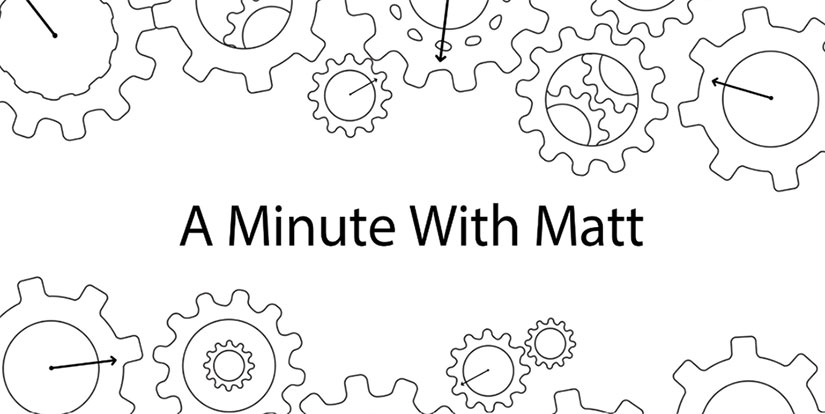Manufacturing Is Not Always What You See in the Movies
In New Video Series, NREL’s Manufacturing Program Manager Discusses the Future of the Industry, Robots, Good Jobs, and Clean Energy

When you think, “manufacturing,” what comes to mind? A factory spewing smoke? Workers in hair nets performing the same task over and over? Or maybe grimy, soot-covered machinery?
Forget the bleak, billowing smoke from “Metropolis” or even the lollipop-colored Oompa-Loompas from “Charlie and the Chocolate Factory.” Today, manufacturing is starting to look more like the bright, organized, high-tech assembly lines of “Big Hero 6” (with some friendly, sophisticated robots, too). In the United States, manufacturing jobs are becoming more automated; machines are doing more of the heavy lifting. The work is also higher paying, safer, and cleaner—for both the workers and the planet.
“Manufacturing jobs don’t always have to be dirty,” said Matt Ringer, the host of a new advanced manufacturing video explainer series called A Minute With Matt. “It can be where you’re actually working at a station, controlling a robot that does that stuff. We’re not losing jobs. We’re just changing the jobs.”
Ringer, who is the laboratory program manager for advanced manufacturing at the National Renewable Energy Laboratory (NREL), started his minute-long-video series to help increase knowledge about what manufacturing—and manufacturing jobs—is all about. According to a 2017 report from Deloitte and the Manufacturing Institute, fewer than five in 10 Americans “believe manufacturing jobs are interesting, rewarding, clean, safe, stable, and secure.”
It is unlikely most Americans have even heard the term “advanced manufacturing.”
With A Minute With Matt, Ringer hopes to change that. So far, he has put out two videos that answer two big manufacturing questions.
In the first, “What Is Advanced Manufacturing?,” he squishes huge changes into the short info-blast. “This is such a hard question to answer these days because there’s so many things that go into it,” Ringer says in his introduction. In short, he explains, “it’s just taking what we used to do and making it better.”
That means better processes, of course—more efficient methods, workers operating robotic arms instead of overworking their own, and cleaner energy sources, too. But advanced manufacturing can also mean recyclable wind turbine blades, safer and more affordable water supplies, a more efficient power grid, better batteries, better buildings, and better jobs.
And it gets better for industry, too. In Ringer’s second video, “How Can Clean Energy Benefit Industrial Facilities,” he explains what NREL is doing to help manufacturing plants reduce their carbon emissions while potentially saving money.
But Ringer also knows these improvements can only happen if the industry has enough people. “Without a stable workforce, none of the innovation that we are doing will make an impact. It’s just the way it is,” he said.
According to the same Deloitte and Manufacturing Institute report, even though manufacturing jobs have the highest average wages (about $81,000) compared to other private sector industries, fewer than three in 10 Americans would encourage their children to pursue a career in manufacturing. And yet, the country expects a manufacturing workforce shortage in the coming decade—the decade where we desperately need to make more clean energy technologies.
Still, Ringer is optimistic about the future of manufacturing and clean energy—in part because of the work that staff at NREL, with support from the U.S. Department of Energy’s Advanced Materials and Manufacturing Technologies Office and Industrial Technologies Office and other partners, are putting into fostering a new generation to pursue careers in advanced manufacturing—but also because advanced manufacturing is transforming the manufacturing workplace.
“You can work in an environment that’s safe, you’re not exposed to things that are hazardous, and you get to take the skills that you’ve developed ... and put them into play on a manufacturing line, making a product that has an impact, that sells, that generates revenue for a company,” Ringer said. “All the things that the commercial sector really needs.”
The A Minute With Matt video series is just one of many ways the laboratory is helping to inspire students, workers in adjacent industries, and even average Americans to change their perceptions of what manufacturing is and can be. That perception shift could help encourage a new generation to get excited to join the industry.
At NREL, he said, we are trying to “bring them together to, in the end, improve the manufacturing industry, reduce carbon, improve the efficiency, and really look at things in a whole new way.”
Browse all of the A Minute With Matt videos on the NREL website, or learn more about manufacturing jobs through our Manufacturing Masterminds Q&A profile series.
And find even more stories and explainers about how NREL’s advanced manufacturing research could help create cleaner energy technologies, buildings, industries, and more.
Last Updated May 28, 2025
